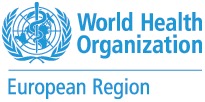
With the international public health emergency ending, WHO/Europe launches its transition plan for COVID-19
Copenhagen, 12 June 2023
Although COVID-19 is no longer defined as a Public Health Emergency of International Concern (PHEIC), it continues to take a significant toll on health globally. With the pandemic now in its fourth year, it is clear the virus is likely to stay with us for many years to come – if not forever. Responding to the current situation, and looking to the future, WHO/Europe is launching its transition plan for COVID-19.
“While the international public health emergency may have ended, the pandemic certainly has not,” explained Dr Hans Henri P. Kluge, Regional Director for WHO/Europe. “And as our Region seeks to emerge from this crisis, it is also faced with new health threats, at a time when our health systems face increasing workforce and other challenges.”
“Using the momentum built since 2020, now is the time to invest and sustain the gains made during the pandemic response and apply the lessons of this pandemic and other health emergencies,” continued Dr Kluge. “This is the way to increase the resilience of our health systems against future shocks.”
Making the transition to the next stage
Across Europe and central Asia, more than 270 million people have been infected by COVID-19 and over 2.2 million people have died from the disease since January 2020. Although hospitalizations and deaths from COVID-19 have declined significantly, thanks to increased population immunity, the continued widespread circulation of the virus means that thousands of vulnerable people are still dying each week. Despite progress made, inequities across the WHO European Region persist, and vast knowledge gaps still need to be filled.
There is still also the very real risk of new variants emerging that could be more transmissible and/or more severe, which makes the need for continued resources into surveillance all the more critical.
Meanwhile, efforts to control infections have relaxed, even though the longer-term health consequences of infection and re-infection at the individual and population levels remain poorly understood.
It is estimated that at least 17 million people experienced Post COVID-19 Condition (long COVID) in the first 2 years of the pandemic and that number potentially doubled to over 34 million in 2022.
As the Region enters this new phase, countries will also have to learn to live with the virus alongside other respiratory diseases, and this means integrating COVID-19 control into broader prevention and control programmes.
As such, WHO/Europe will implement 13 strategic shifts in its approach to managing COVID-19 across the 5 core subsystems of WHO’s work in emergencies.
To help achieve this, WHO/Europe’s new transition plan provides a framework to leverage innovations and lessons from COVID-19 and other recent emergencies into the development of the next regional 5-year action plan to strengthen health emergency preparedness, response, and resilience in the WHO European Region, 2024–2029 – what WHO/Europe is calling Preparedness 2.0.
“This marks a move towards a new paradigm that aims to give the Region the required capabilities and networks to rapidly detect, verify and notify new and evolving health threats, and to effectively respond to emergencies caused by any hazard, grounded in the principles of solidarity, transparency, and accountability,” said Dr Gerald Rockenschaub, WHO Regional Emergency Director for Europe.
The transition plan sets out how COVID-19 activities should be managed and integrated within 5 core components of WHO's proposed global health architecture for Health Emergency Preparedness, Response and Resilience (HEPR):
- collaborative surveillance, including sustaining and building laboratory capacity and using digital tools to collect and analyse COVID-19 data;
- community protection across the emergency cycle to enable and empower communities to take informed decisions to uptake measures that protect their health in emergencies;
- clinical care, ranging from training frontline health workers and strengthening the foundations for safe, scalable, and high-quality care to ensuring sustained investment in health services and emergency care systems;
- countermeasures, such as learning from and sustaining the COVID-19 vaccination roll-out as part of wider immunization efforts; and
- coordination, from hazard-specific COVID-19 and influenza pandemic response plans to integrated respiratory virus pandemic planning.
To make this happen, Member States need to strategically and sustainably invest in pandemic preparedness, while maintaining vigilance through dual-track readiness that can respond to new health threats and ensuring the continuation and resilience of essential health services.
“The end of the global COVID-19 emergency is not an occasion to pack up and move on,” warned Dr Catherine Smallwood, Senior Emergency Officer, WHO/Europe. “It is a call to action to use this time wisely, to not waste the progress or the lessons of the past 3 years, but to sustain and learn from them in order to help create a better prepared and resilient European Region in the future.”
ENDS
For further information please contact Sarah Tyler tylers@who.int
WHO/Europe Press Office eupress@who.int
This information was brought to you by Cision http://news.cision.com
If you would rather not receive future communications from WHO Regional Office for Europe, please go to https://optout.ne.cision.com/en/dqVspLCQoSXizWdMQUBAir3K5a8wbqQ4YGKwzsHQZ3NYkwdRcoEFe8PFtSWa1xcMnTkvAaG87cX7eLnJ1hx556kGMUEsViw6JetkyrYDvTkTwPYXRaTx6utesoCxvTo8dp3.
WHO Regional Office for Europe, Marmorvej 51, Copenhagen, 2100 Denmark



